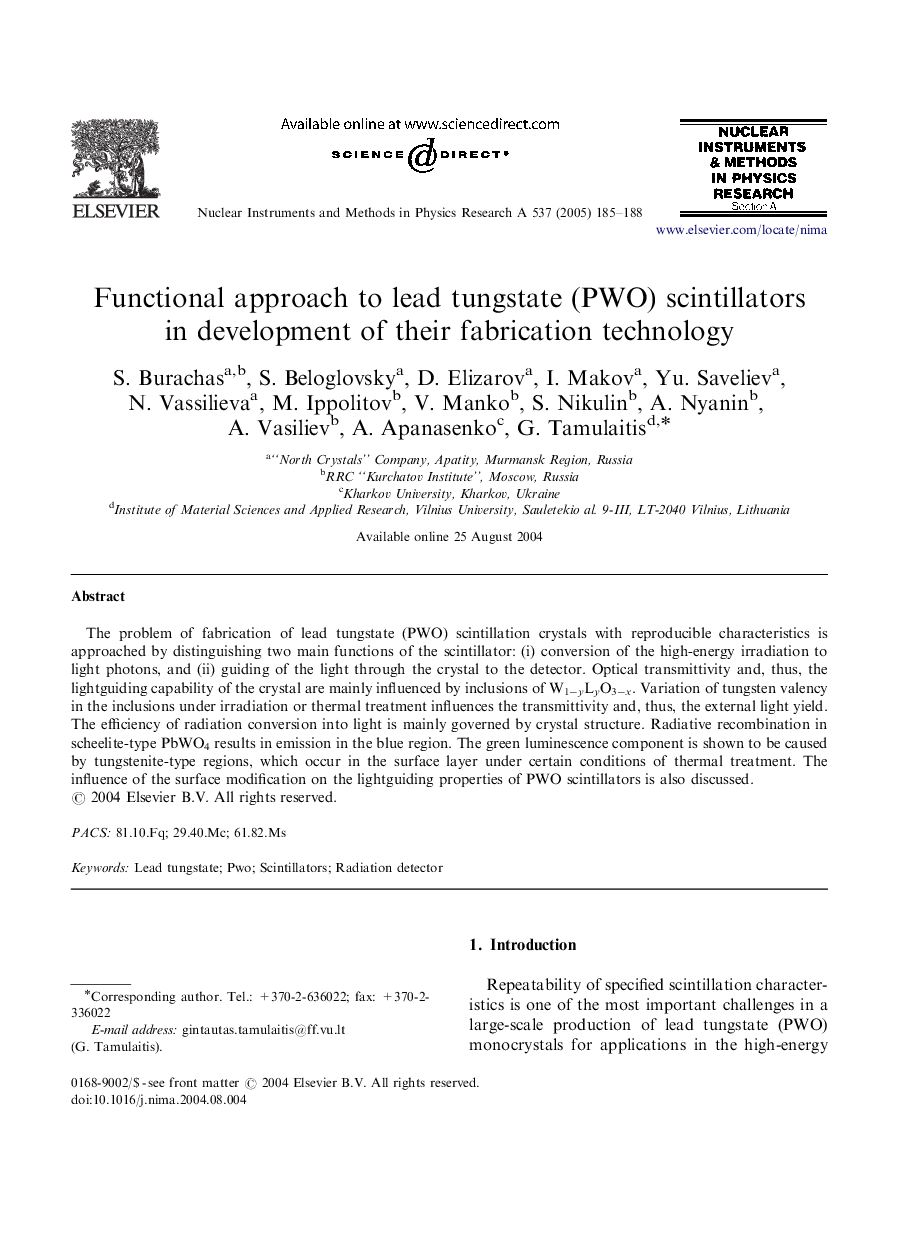| Article ID | Journal | Published Year | Pages | File Type |
|---|---|---|---|---|
| 9845879 | Nuclear Instruments and Methods in Physics Research Section A: Accelerators, Spectrometers, Detectors and Associated Equipment | 2005 | 4 Pages |
Abstract
The problem of fabrication of lead tungstate (PWO) scintillation crystals with reproducible characteristics is approached by distinguishing two main functions of the scintillator: (i) conversion of the high-energy irradiation to light photons, and (ii) guiding of the light through the crystal to the detector. Optical transmittivity and, thus, the lightguiding capability of the crystal are mainly influenced by inclusions of W1âyLyO3âx. Variation of tungsten valency in the inclusions under irradiation or thermal treatment influences the transmittivity and, thus, the external light yield. The efficiency of radiation conversion into light is mainly governed by crystal structure. Radiative recombination in scheelite-type PbWO4 results in emission in the blue region. The green luminescence component is shown to be caused by tungstenite-type regions, which occur in the surface layer under certain conditions of thermal treatment. The influence of the surface modification on the lightguiding properties of PWO scintillators is also discussed.
Related Topics
Physical Sciences and Engineering
Physics and Astronomy
Instrumentation
Authors
S. Burachas, S. Beloglovsky, D. Elizarov, I. Makov, Yu. Saveliev, N. Vassilieva, M. Ippolitov, V. Manko, S. Nikulin, A. Nyanin, A. Vasiliev, A. Apanasenko, G. Tamulaitis,
